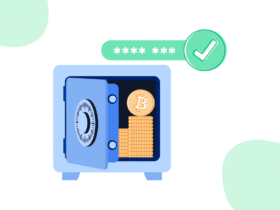Among a host of improvements focused on improving the usability of wallets, the update Pectra will allow sponsorship of network tariffsIn other words, the user will be able to transact on Ethereum with insufficient balance.
This solution, which is still in development, will follow on from the EIP-3074 standard, which allows users of externally owned accounts (EOA), such as wallets, to delegate them to an Ethereum smart contract. This standard will presumably allow for fewer signatures on the network and less gas.
According to Ethereum organization documents, “The primary motivation for this EIP is sponsored transactions. This is where the fee for a transaction is provided by a different account than the one originating the call,” referring to the transaction as a call.
EIPs are efficient for sponsored transactions as they allow developers to create and design more flexible transaction and fee schemes. Without implementation, all transactions made on the network by wallets (EOA) would continue to occur in the form of a double signature request, which leads to higher gas costs.
In other words, this EIP-3074 standard will allow payment for a transaction to be carried out by an account other than that of the user, who will now be able to see a transaction signed on the network without having a balance in his or her account.
Sponsored transactions solve a basic problem in Ethereum, but one that is common in any network, where there is the paradox of wallets with valuable assets, but no ether to transfer them. This can happen because an airdrop scattered assets into wallets without ether holdings, or because a friend funded the wallet of another who does not yet know how to use cryptocurrencies.
The traditional way to solve this bottleneck is to create an account on an exchange, convert fiat money to ether, send ether to the private wallet, and finally pay for the transaction. The Ethereum organization considers sponsored transactions to be the most suitable solution. for this because they “break the circular dependency” of needing ethers to move ethers.
What is the Pectra update?
Ethereum’s Pectra update is an update focused on improving the usability of cryptocurrency wallets. To avoid possible errors and bugs, the developers decided that They will split the update and roll it out separately in two packages.
The first of these packages will arrive on Ethereum in the first quarter of 2025. The second could arrive several months after the first and would bring modifications to the Ethereum Virtual Machine (EVM).
He EIP-3074 standardwhich is just one of several features in the update, aims to improve connectivity between wallets and smart contracts. It can also be used to integrate social recovery mechanisms for lost keys and bulk transactions.
The standard proposed by Vitalik Buterin
Another standard, EIP-7702, was proposed by Vitalik Buterin, the creator of Ethereum. This would be an improvement on EIP-3074 as it would allow EOAs to act as smart contracts while processing a transaction and, after completing it, return to their original external account state.

Among other consequences, this return to external ownership would prevent smart contracts from having too much control over the wallet, avoiding the custodial dangers of prolonged possession.
Other improvements that the EIP-7702 standard would bring is the maximum increase in the amount of ethers in staking: from 32 ETH to 2048 ETH, which facilitates node management by avoiding having to create new ones, which entails operational costs. With this same measure, stakers will have to interact less with staking contracts on Ethereum, which entails lower gas costs.
Pectra will be the first major upgrade to Ethereum after Dencun, which was implemented in March 2024 and promised to reduce gas fees through more organized data management on the network. Pectra will be released approximately one year after Dencun.






Leave a Reply